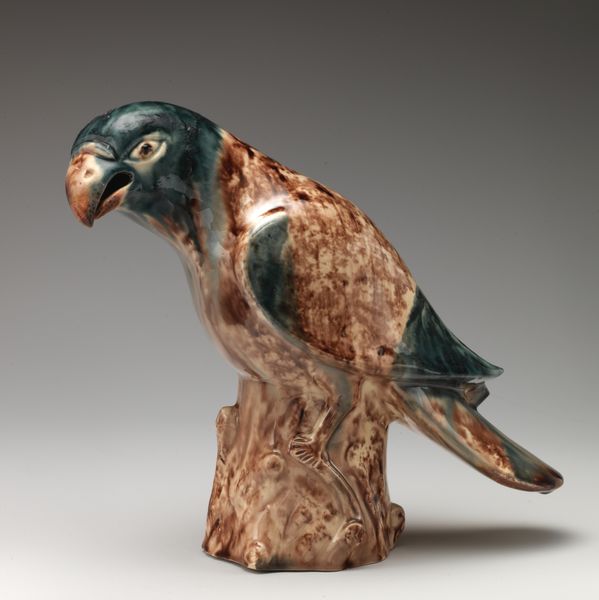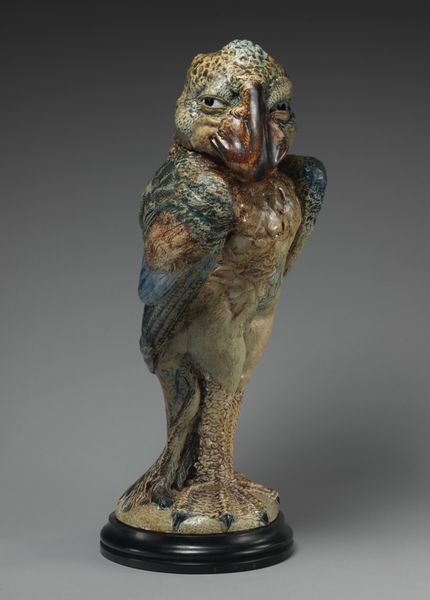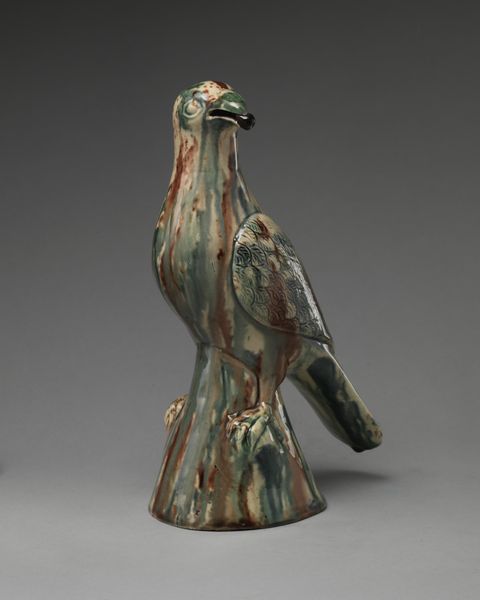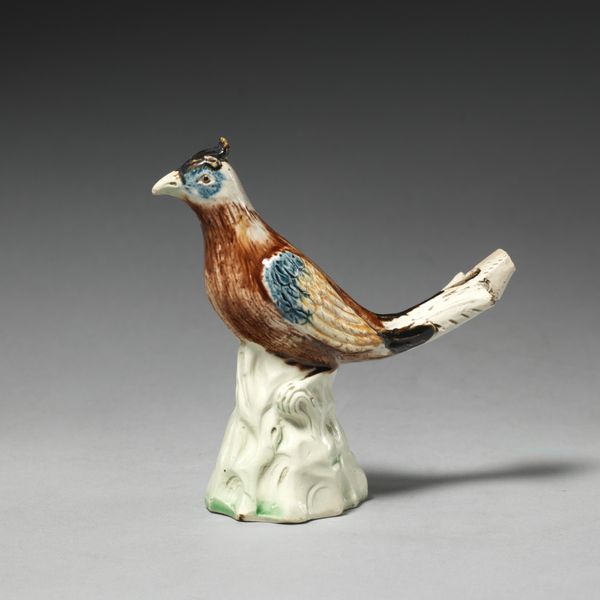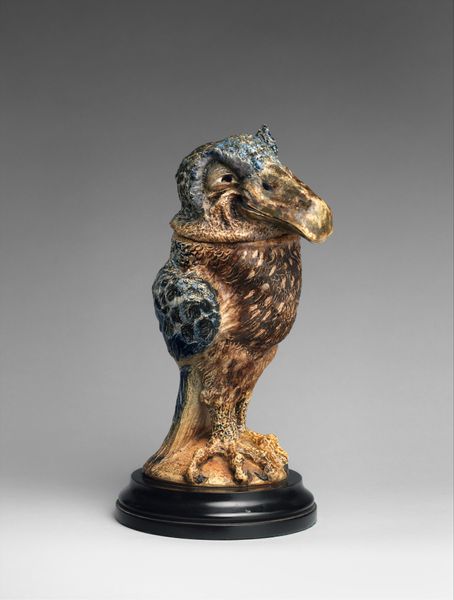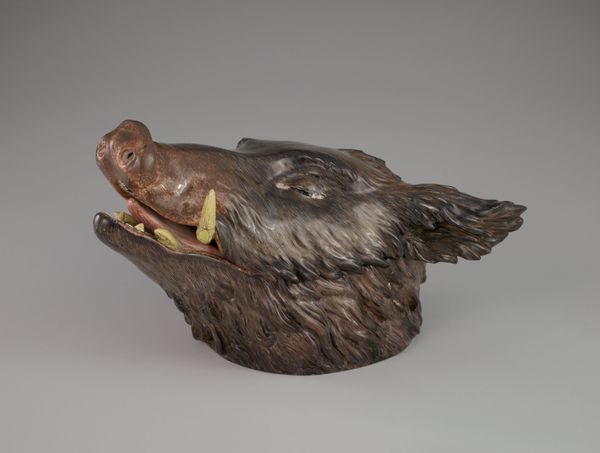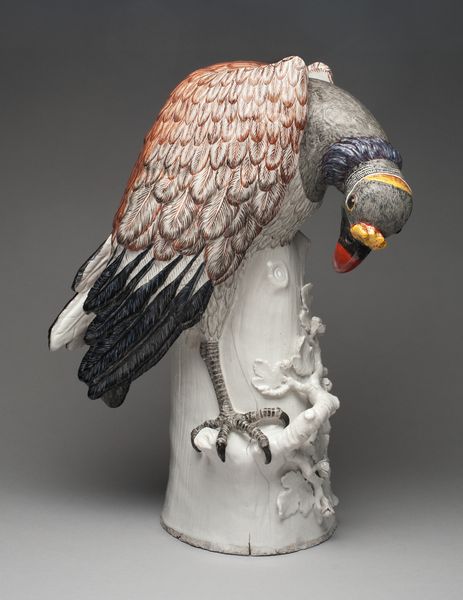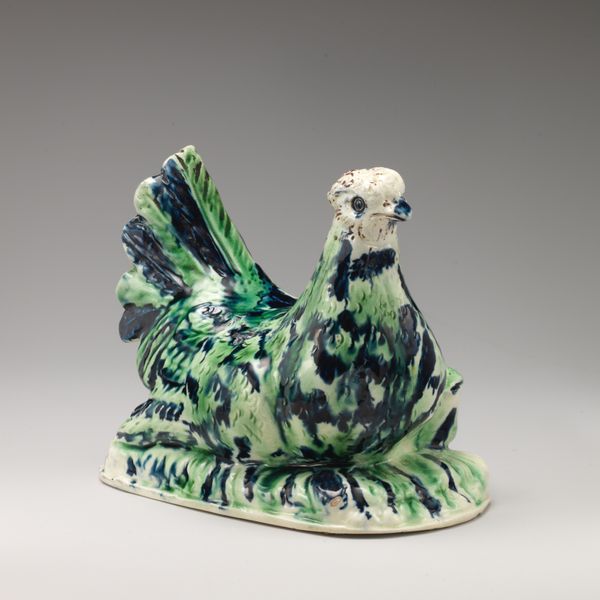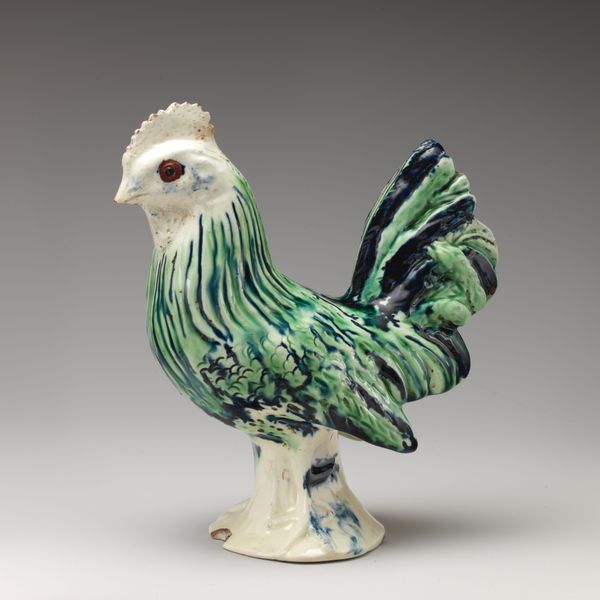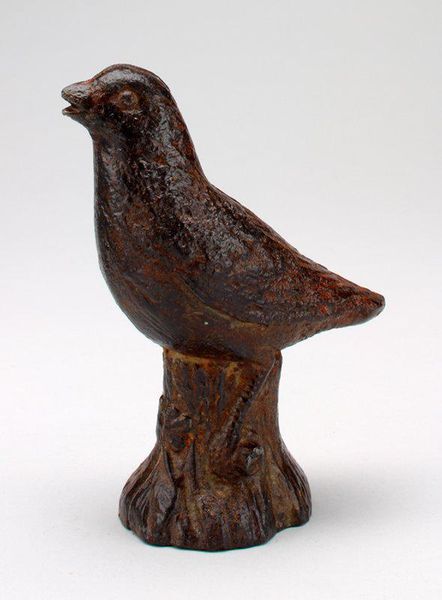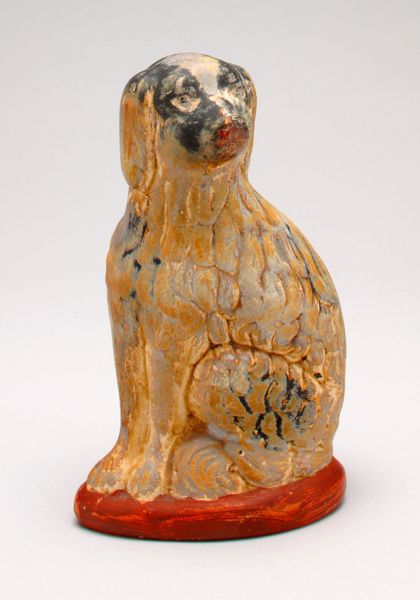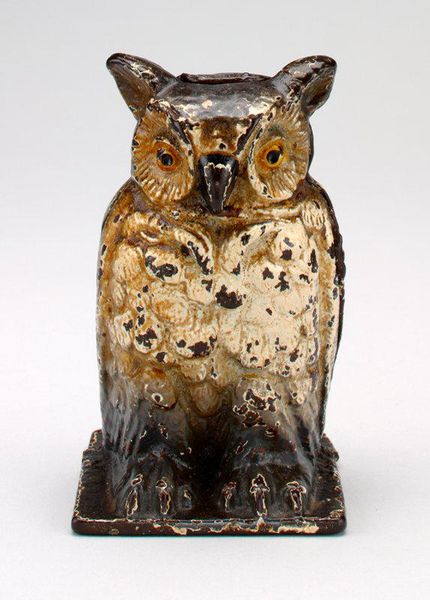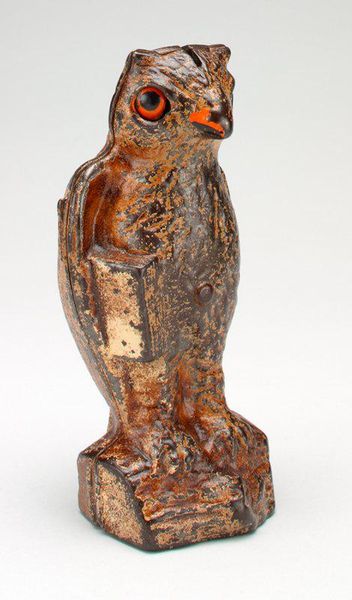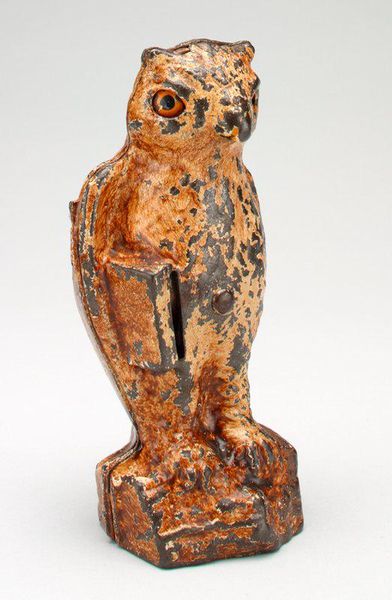
ceramic, sculpture
#
medieval
#
ceramic
#
sculpture
#
decorative-art
Dimensions: Height: 7 1/2 in. (19.1 cm)
Copyright: Public Domain
Curator: Before us stands a ceramic sculpture of a hawk, made in the style of Whieldon-type ware, sometime between 1745 and 1765. It's part of the decorative arts collection at the Metropolitan Museum of Art. Editor: Immediately, I'm struck by its earthiness. It's like they pulled the bird right out of the forest floor. The glazed browns and greens have a wonderful, muted quality, don't they? Almost like an ancient relic discovered. Curator: The mottled coloration is key. Whieldon ware is characterized by these lead glazes that create those unpredictable, organic patterns during firing. Each piece is, in that sense, a unique collaboration between artist and kiln. Consider the labor involved; from sourcing the clay, preparing the glazes, forming the sculpture... It really highlights the skill involved in pre-industrial ceramic production. Editor: Yes, a testament to handcraft. But to me, there is something so regal in that hawk’s bearing despite its muted colors, so dignified. Look at that fierce eye, that powerful beak, frozen in ceramic but full of intent. It feels timeless, doesn't it? Evoking a sense of wild nature held captive, perhaps? Curator: The decorative arts often served a purpose beyond the purely aesthetic. Pieces like this might have adorned a wealthy person's home, demonstrating both their taste and their access to refined goods. The hawk itself, a symbol of power and status, further reinforces that message of social standing. Editor: I wonder about the hands that formed it. Did they feel a connection to the creature they were depicting? I imagine the artisan imbuing it with their own respect for nature, translating observation into this solid, enduring form. It’s humbling to consider the legacy of the anonymous artisans who imbued these functional pieces with personality and charm. Curator: Precisely. It bridges the gap between functionality and artistry. Examining these objects closely provides critical insights into past production practices and their related social hierarchies and markets. Editor: Well, I see now in a fresh light what might seem just a quaint ornament of a long lost home. Curator: Indeed, a glimpse into the values and artistry of a different era, made tangible.
Comments
No comments
Be the first to comment and join the conversation on the ultimate creative platform.
